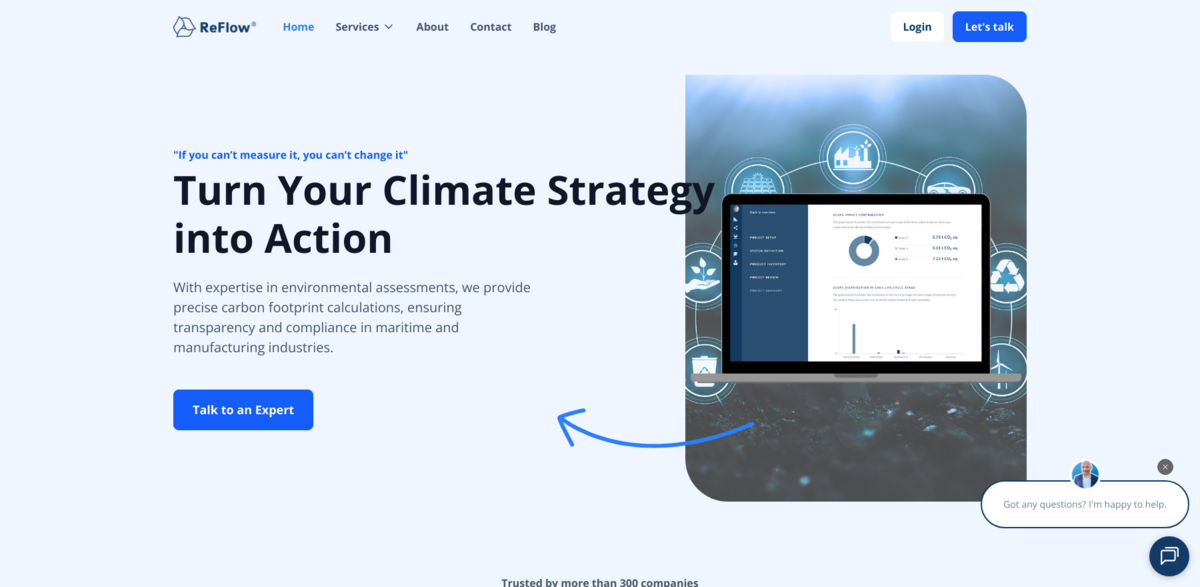Turning Climate Strategy Into Real Action
In today’s world, having a climate strategy is just the start. The real challenge? Turning that strategy into action. With deep expertise in environmental assessments, this project offers precise carbon footprint calculations that bring transparency and compliance to the maritime and manufacturing industries. It’s about cutting through the noise and delivering clear, actionable data that companies can trust.
Why Accurate CO₂ Data Makes All the Difference
Getting CO₂ numbers right isn’t just a nice-to-have—it’s essential. Many companies struggle to pin down their true environmental impact, which makes reducing emissions and staying ahead of regulations a tough game. Here’s why accuracy matters:
- Increasing regulations demand precise emissions data.
- Inaccurate calculations lead to missed opportunities for reduction.
- Transparency is key—not just for compliance, but for gaining a competitive edge.
Life-Cycle Assessment: The Heart of the Approach
This project uses life-cycle assessment (LCA) to provide a full picture of environmental impact—from start to finish. It’s not just about numbers; it’s about practical steps companies can take to reduce their footprint. The process breaks down like this:
- Calculate – Precise CO₂ data across the entire supply chain.
- Compare – Spot emissions hotspots and areas ripe for reduction.
- Reduce – Make informed decisions to cut emissions effectively.
- Report – Stay compliant with global standards and regulations.
Leading Change in Climate Data and Industry Standards
This initiative isn’t just following the sustainability crowd—it’s leading it. From shaping international regulations to advising industry leaders, it’s actively driving the future of transparency in maritime and manufacturing. Some highlights include:
- Co-authoring ISO 8266, setting new energy efficiency standards for maritime products.
- Serving on advisory boards to support innovation at the Confederation of Danish Industry.
- Leading IMPA’s environmental footprint initiative to shape maritime sustainability.
- Having a CEO who’s an EU Climate Pact Ambassador, promoting traceable, science-based decarbonization.
Who Benefits? Trusted by Maritime and Manufacturing
The project supports a range of industries by providing life-cycle assessments and emissions calculations that help companies make smarter, greener decisions. Key beneficiaries include:
- Ship Owners: Vessel LCA assessments plus comprehensive GHG and Scope 3 data to ensure compliance and support decarbonization strategies.
- Product Climate Data: Reliable climate data estimates for products, helping suppliers meet transparency demands and support credible Scope 3 emissions reporting.
- Manufacturing: Quantifying environmental impacts, comparing circularity options, and creating certified documentation like LCAs and EPDs to back up green claims.
Project Impact: Supporting Global Sustainability Goals
- SDG 12: Responsible Consumption and Production
- SDG 13: Climate Action
- SDG 9: Industry, Innovation, and Infrastructure
- SDG 14: Life Below Water (through maritime sustainability)
- SDG 17: Partnerships for the Goals (collaborating on standards and regulations)
Why Move Beyond Spend-Based Methods?
Traditional spend-based methods for estimating CO₂ emissions have their place—they’re a practical starting point when detailed data is scarce. But they come with big limitations. Inflation and price changes can throw off the link between spending and actual emissions, leading to uncertainty. This project champions an activity-based approach instead, using real operational data to deliver precise carbon calculations. The result? Clearer insights, better decisions, and true accountability. It’s a game changer for companies serious about making a real impact.





















